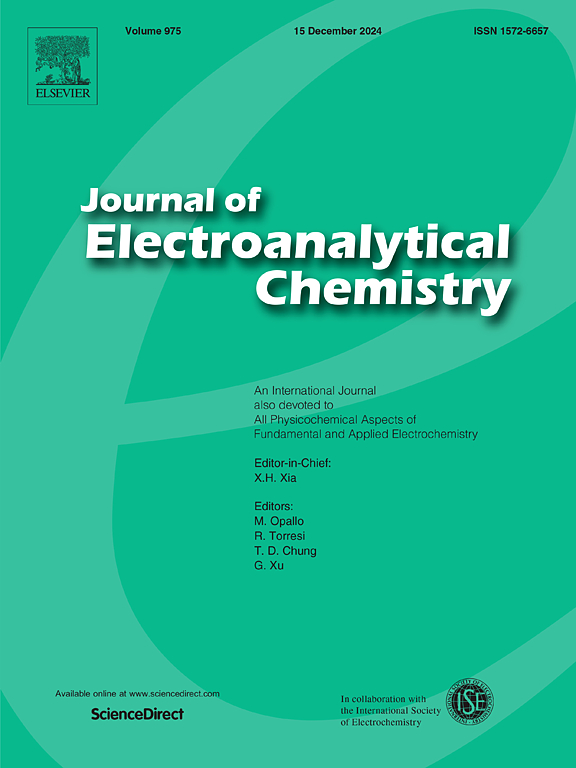Tailoring the surface of a polymeric membrane with a thin-layer Nafion membrane: Construction of an anti-surfactant solid-contact ion-selective electrode
IF 4.1
3区 化学
Q1 CHEMISTRY, ANALYTICAL
引用次数: 0
Abstract
Surfactants are a type of amphiphilic chemicals that comprise both hydrophilic and hydrophobic regions, and the presence of surfactants would bring a detrimental effect on the potential responses of the solid-contact ion-selective electrodes induced by their extraction from the aqueous solution into the polymeric membrane phase. Herein, an anti-surfactant solid-contact Ca2+-selective electrode is proposed based on tailoring the surface of the polymeric membrane with the thin-layer Nafion membrane. The extraction of surfactants into the polymeric membrane can be eliminated through using the hydrophobic group of Nafion acting as “a polymer brush”, while the Ca2+ diffusion from the aqueous solution to the membrane phase is promoted by the hydrophilic group of Nafion based on the electrostatic interaction. The Nafion-functionalized solid-contact Ca2+-ISE shows an improved potential stability and an excellent potentiometric performance for detection of Ca2+ in the presence of cationic and anionic surfactants as compared to the traditional solid-contact Ca2+-ISE. Moreover, the anti-surfactant solid-contact ion-selective electrode is feasible for in situ measurement of Ca2+ at the interface between the seawater and the sediment. This work provides a general and facile strategy to eliminate the interferences of surfactants during the potentiometric measurements, and is favorable for in situ, on-site measurement with high accuracy and precision in the aquatic environment.

求助全文
约1分钟内获得全文
求助全文
来源期刊
CiteScore
7.80
自引率
6.70%
发文量
912
审稿时长
2.4 months
期刊介绍:
The Journal of Electroanalytical Chemistry is the foremost international journal devoted to the interdisciplinary subject of electrochemistry in all its aspects, theoretical as well as applied.
Electrochemistry is a wide ranging area that is in a state of continuous evolution. Rather than compiling a long list of topics covered by the Journal, the editors would like to draw particular attention to the key issues of novelty, topicality and quality. Papers should present new and interesting electrochemical science in a way that is accessible to the reader. The presentation and discussion should be at a level that is consistent with the international status of the Journal. Reports describing the application of well-established techniques to problems that are essentially technical will not be accepted. Similarly, papers that report observations but fail to provide adequate interpretation will be rejected by the Editors. Papers dealing with technical electrochemistry should be submitted to other specialist journals unless the authors can show that their work provides substantially new insights into electrochemical processes.

 求助内容:
求助内容: 应助结果提醒方式:
应助结果提醒方式:


